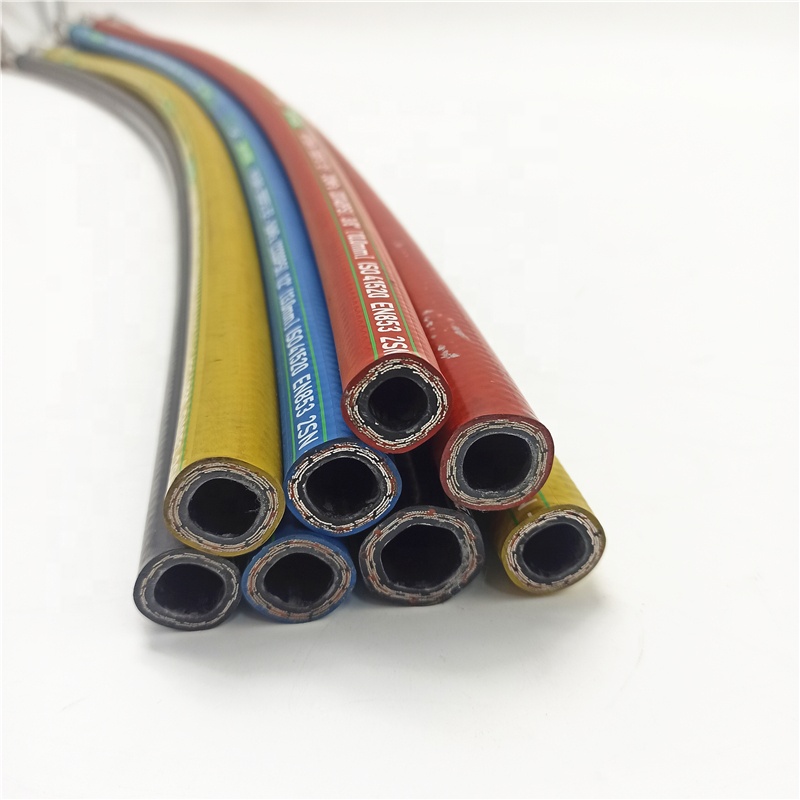335345435
Jul . 31, 2024 13:00 Back to list
Different Varieties of Hydraulic Hoses and Fittings for Industrial Applications and Solutions
Types of Hydraulic Hoses and Fittings
Hydraulic systems are integral to modern machinery and industrial applications. They utilize fluids under pressure to transmit energy efficiently. At the heart of these systems are hydraulic hoses and fittings, which serve to connect the different components and facilitate fluid flow. Understanding the types of hydraulic hoses and fittings available is essential for choosing the right components for your specific applications.
Hydraulic Hoses
Hydraulic hoses are designed to carry hydraulic fluid between various components of a hydraulic system. They come in various types, each suited for specific applications and environmental conditions.
1. Standard Hydraulic Hoses These hoses are most commonly used in general hydraulic applications. They typically have a synthetic rubber outer layer for protection against abrasion and weather, and one or more layers of high-tensile strength steel wire reinforcement to withstand high pressure.
2. Low-Pressure Hoses These hoses are designed for applications where the pressure does not exceed 300 psi. They are often used in lighter applications like agricultural equipment and machinery where high pressure is not a requirement.
3. High-Pressure Hoses As the name suggests, these hoses are engineered to withstand much higher pressures, often exceeding 5,000 psi. They are typically used in mobile equipment, construction machinery, and some industrial applications where peak performance is critical.
4. Temperature-Resistant Hoses These hoses are designed to operate in extreme temperature conditions, either hot or cold. Their construction often includes specialized rubber compounds that maintain flexibility and integrity even under high heat or extreme cold.
5. Chemical-Resistant Hoses Certain applications involve the transmission of chemicals that can degrade standard hoses. Chemical-resistant hoses are constructed with materials specifically designed to withstand corrosive substances, making them suitable for agricultural, manufacturing, and chemical processing industries.
6. Wire-Braided Hoses These are high-pressure hydraulic hoses reinforced with braided steel wire, ensuring maximum strength and durability. They are commonly used in heavy machinery and hydraulic applications that demand reliable performance.
types of hydraulic hoses and fittings

Hydraulic Fittings
Fittings play a critical role in the reliability and efficiency of a hydraulic system. They connect hoses, tubes, and components to ensure fluids flow without leaks.
1. Swivel Fittings These fittings allow for flexibility in installations, providing the ability to rotate while maintaining a seal. They are often used in tight or complex configurations where directional changes are necessary.
2. Compression Fittings These fittings are used to secure hoses and tubing by compressing a sleeve onto the tubing when tightened. This type of fitting provides a strong connection but can be more challenging to disassemble.
3. Flare Fittings Flare fittings utilize a conical seating surface to create a leak-free seal. They are commonly used in high-pressure applications and provide a reliable connection for hydraulic systems.
4. Quick Disconnect Fittings Designed for ease of use, these fittings enable quick connection and disconnection of hoses without the need for tools. They are ideal for applications where hoses are frequently changed or disconnected.
5. Barbed Fittings These fittings use a raised ridge or barb to grip the inside of a hose. They are typically used in lower-pressure, non-hydraulic applications, such as in fluid transfer for agricultural purposes.
Conclusion
Choosing the right hydraulic hoses and fittings is crucial for the performance, efficiency, and safety of a hydraulic system. Each type of hose and fitting serves a specific purpose, with unique features that cater to various operational needs. Understanding these components will help engineers and technicians make informed choices, ensuring that their hydraulic systems operate at peak efficacy and reliability. As technology advances, the materials and designs of hoses and fittings continue to evolve, providing even greater performance for the demanding requirements of modern industry.
-
SAE 100 R17 Black Smooth Cover Hydraulic Hose
NewsMar.07,2025
-
SAE 100 R17 Black Smooth Cover Hydraulic Hose
NewsMar.07,2025
-
SAE 100 R17 Black Smooth Cover Hydraulic Hose
NewsMar.07,2025
-
SAE 100 R17 Black Smooth Cover Hydraulic Hose
NewsMar.07,2025
-
SAE 100 R17 Black Smooth Cover Hydraulic Hose
NewsMar.07,2025
-
steel wire braided hydraulic hose
NewsMar.07,2025



